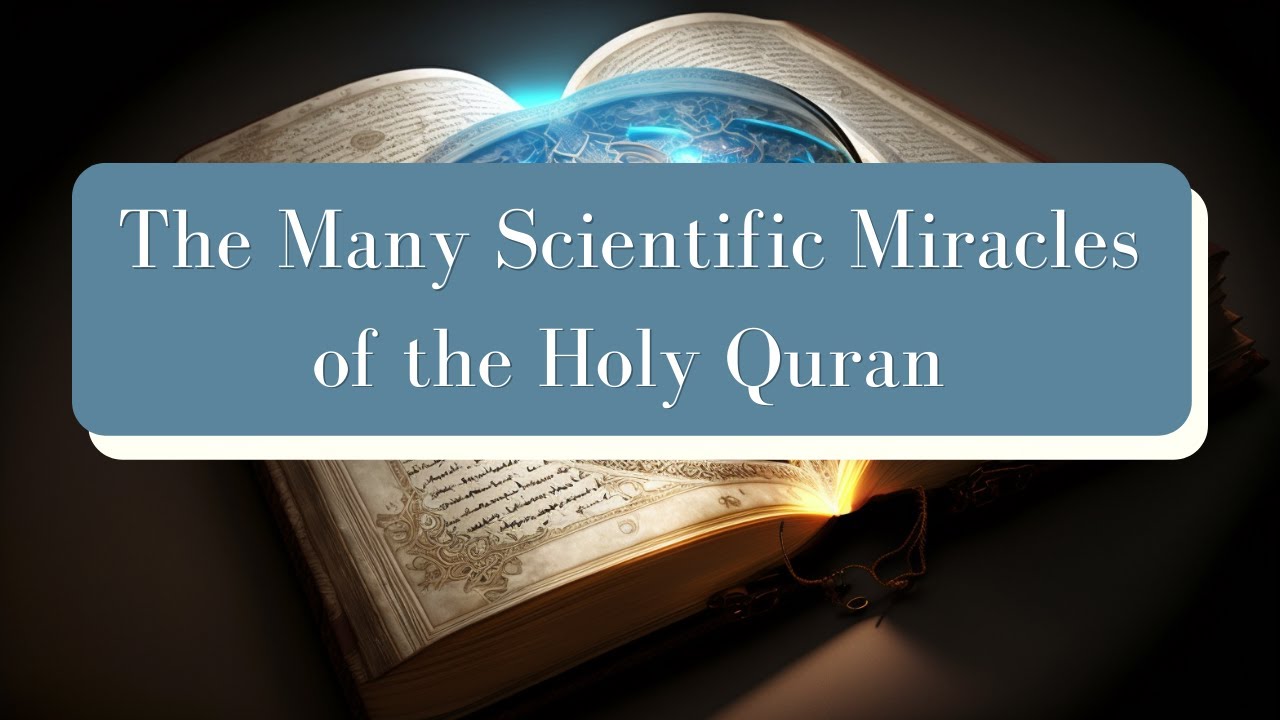Scientific Miracles in Quran, The Quran was revealed in a period when human knowledge about the natural world was limited. Despite this, the text contains precise descriptions of various scientific concepts related to astronomy, biology, geology, embryology, and more. These descriptions, often conveyed in poetic and symbolic language, predate modern scientific findings by centuries. The recognition of these miracles does not undermine scientific inquiry but rather encourages harmonious understanding between faith and reason.
Scientific Miracles in Quran
One of the most prominent areas where the Quran mentions scientific phenomena is in astronomy. Several verses refer to the creation of the heavens and the earth, the orbits of celestial bodies, and the expansion of the universe.
-
The Expansion of the Universe: In Surah Adh-Dhariyat (51:47), it is stated, “And the heaven We constructed with strength, and indeed, We are [its] expander.” This verse aligns with the modern discovery of the expanding universe, a concept formulated in the 20th century through astrophysics and the Big Bang theory.
-
Orbits and Celestial Paths: The Quran makes reference to the sun and moon moving in defined orbits. Verse 21:33 says, “It is He who created the night and the day and the sun and the moon; all [heavenly bodies] in an orbit are swimming.” This accurate depiction resonates with current understanding of the solar system’s mechanics.
-
The Protective Atmosphere: Surah Al-Anbiya (21:32) refers to the sky as a protective ceiling, which many interpret as a reference to the Earth’s atmosphere that shields life from harmful solar radiation.
Embryology in the Quran

One of the most detailed scientific miracles in the Quran is its description of human embryonic development. During the 7th century, little was known about biology or embryology, yet the Quran provides a sequence of stages in the formation of a human being.
-
Stages of Development: Surah Al-Mu’minun (23:12-14) describes creation from dust, then a drop of fluid, followed by a “leech-like substance,” then a chewed-like lump, and then bones clothed with flesh. This remarkable account parallels the stages of fertilization, implantation, and development of the embryo and fetus.
-
The Role of Fluids: In Surah Al-Insan (76:2), the origin of humans from a mixed drop of fluid (semen) is mentioned, which corresponds with modern reproductive biology.
Geology and Earth Sciences
The Quran also touches upon earth sciences, including the creation of mountains, the formation of seas, and the origin of life from water.
-
Mountains as Stabilizers: Verses such as Surah An-Naba (78:6-7) say, “Have We not made the earth as a bed, and the mountains as pegs?” Modern geology explains that mountains have deep roots within the earth’s crust, acting as stabilizers for tectonic plates, a concept the Quran hinted at centuries ago.
-
Origin of Life from Water: Surah Al-Anbiya (21:30) states, “We made from water every living thing,” reflecting the scientific fact that all known life forms require water for survival and that water is the source of life on Earth.
Physics and Natural Laws
Some Quranic verses allude to natural laws and phenomena that align with physics concepts.
-
Gravity and Motion: Although not explicitly stating gravity, the Quran describes the sun and moon in motion and the order of celestial bodies, hinting at underlying natural laws governing motion.
-
Alternation of Day and Night: Surah Az-Zumar (39:5) refers to the consistent cycle of day and night, supporting the rotation of the Earth—confirmed scientifically much later.
Botany and Biology
The Quran identifies plant life processes in a way that coincides with scientific observations.
-
Plant Growth and Reproduction: Surah Al-An’am (6:99) mentions that God sends down rain, then brings forth vegetation, pasture, and grain, which explains the water cycle and its importance for plant growth.
-
Seeds and Development: Surah Abasa (80:25-32) describes how seeds sprout and develop, a process consistent with modern botany.
Oceanography
The Quran also draws attention to phenomena in the seas and oceans, some of which science has only recently explained.
-
Barriers Between Seas: Surah Al-Furqan (25:53) notes that two seas meet without mixing, referring to the natural condition of saltwater and freshwater bodies forming an invisible barrier due to differences in density and salinity.
-
Ocean Depths and Darkness: The Quran describes the layers of the sea and how darkness overwhelms deep waters (Surah An-Nur 24:40), which resonates with the scientific understanding of ocean depths and light penetration.
Scientific Miracles and Their Implications
The presence of these verses, consistent with later scientific discoveries, suggests a divine knowledge beyond the human capacity of the 7th century. They serve as signposts, encouraging believers to reflect on the universe’s order and the Quran’s spiritual and scientific depth.
Moreover, these miracles counter claims that religion and science must always be in opposition. Instead, they point toward a complementary relationship where spiritual teachings and empirical science enrich human understanding.
FAQs
What are scientific miracles in the Quran?
Scientific miracles refer to verses in the Quran that describe natural phenomena or scientific facts that were unknown during the time of the Prophet Muhammad but have been confirmed by modern science.
Do scientific miracles prove the Quran's divine origin?
Many Muslims believe these miracles serve as evidence of the Quran’s divine origin, as the knowledge they contain could not have been known by humans 1400 years ago.
How does the Quran describe human embryology?
The Quran mentions stages of embryonic development, such as the small clot-like stage and the formation of bones and flesh, which align with modern embryological science.
Are scientific miracles in the Quran recognized by non-Muslim scientists?
While some non-Muslim scientists acknowledge these correspondences as interesting, interpretations vary, and scientific inquiry is based on empirical evidence independent of religious texts.
Does believing in scientific miracles contradict scientific methodology?
Belief in scientific miracles does not contradict scientific methodology; rather, many scholars argue that the Quran encourages studying nature and understanding the universe as signs of divine wisdom.
Conclusion
Scientific miracles mentioned in the Quran demonstrate a striking harmony between divine revelation and modern scientific discoveries. From the development of the human embryo to the vast expanses of the universe, the Quran’s descriptions inspire believers to contemplate the signs of God’s creation. These miracles strengthen faith while encouraging curiosity and exploration, affirming that the Quran is not merely a spiritual text but also a guide containing knowledge that transcends time. The continuous study and discovery of these phenomena help bridge the gap between religion and science, promoting a worldview that embraces both faith and reason.

